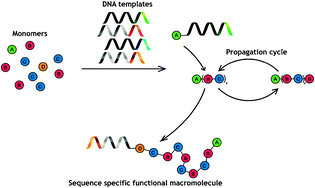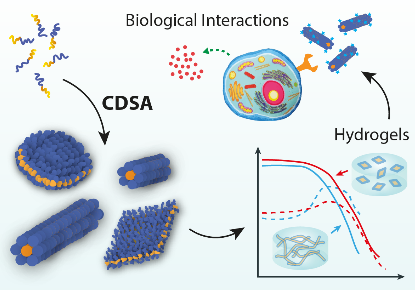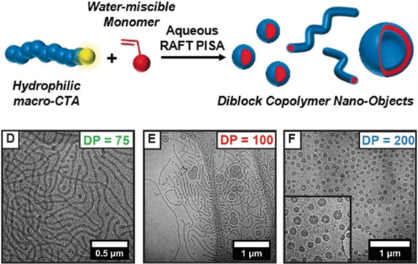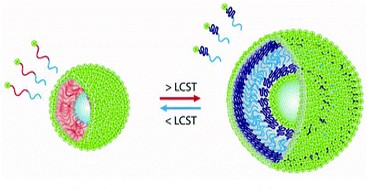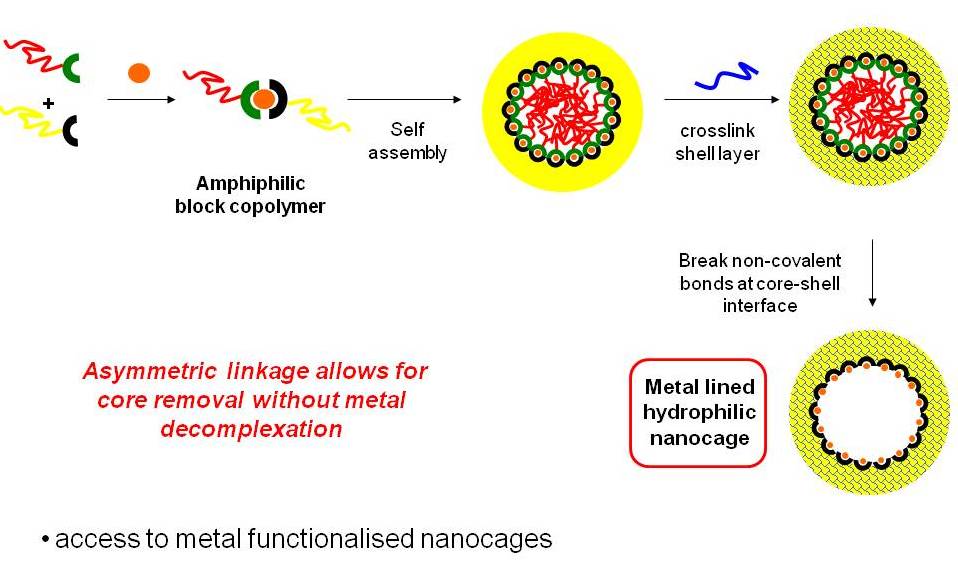Substituted Maleimides Based Fluorescent Materials
Maleimides derivatives, constructed by a five-member heterocyclic structure, have been long investigated as an important motif in organic synthesis and drug design fields. Our group has developed a library of substituted maleimides structures with small size, multiplex modification chemistries, and remarkable fluorescent properties which provided unheralded interest in fluorescent labelling and imaging applications. The fluorescent properties of these substituted maleimides can be tuned by carefully modifying the substituents and are dependent upon the molecules’ microenvironment. More importantly, the versatile modification chemistries and small size of these novel fluorophores provided ideal functional capacity in polymer modification areas without disrupting the assembly process and do not change the micellar dynamics of the construct. Combined with forefront fluorescent spectroscopic and microscopic techniques, the substituted maleimides modified polymeric materials have been tailored at different length scales for various applications, such as monitoring the chemical/physical behaviors of polymers, imaging the biology structures, analyzing/diagnosing the small molecules, and storing the information. Currently, we are interested in exploring these small-molecule fluorophores in a range of different areas including:
- Investigation of Fluorescence Mechanism in Substituted Maleimides
- Design of Substituted Maleimides Based Fluorescent Polymeric Materials
- Exploration of the Substituted Maleimides Based Materials in Fluorescent Imaging Applications
Investigation of Fluorescence Mechanism in Substituted Maleimides

Substituted maleimides have emerged as a class of small neutral fluorophores that are highly emissive, easily modified, and environmentally responsive. The efforts have been made in our group to expand the maleimides fluorophores with excellent optical properties, such as increasing the fluorescence quantum yield, expanding the emission wavelength, and developing responsive properties, which could provide the possibility for cost-effective imagining applications. Owning to the versatile reactivity and facile structures, different substitution groups and on patterns were achieved by numerous reactions in the synthesis of different maleimides, which allowed us to explore the fluorescence mechanism related to the electron localization. In this regard, the fluorescent properties of substituted maleimide structures could potentially be predicted and tuned for various applications. Meanwhile, we are also interested in investigating the versatile modification chemistries from the maleimides structures, which enable the multiplex functionalization within one molecule and hence be useful as the linker in many areas like drug design, material modification, and functionalization.
Conjugation-Induced Fluorescent Labeling of Proteins and Polymer Using Dithiomaleimides, M. Robin, P. Wilson, A. Mabire, J. Kiviaho, J. Raymond, D.M. Haddleton, R. K. O’Reilly, J. Am. Chem. Soc., 2013, 135, 2875-2878. DOI: 10.1021/ja3105494
Aminomaleimide fluorophores: A simple functional group with bright, solvent dependent emission, A. B. Mabire, M. P. Robin, W.-D. Quan, H. Willcock, V. G. Stavros, R. K. O’Reilly, Chem. Commun., 2015, 51, 9733-9736, DOI: 10.1039/C5CC02908B
Rational design of substituted maleimide dyes with tunable fluorescence and solvafluorochromism, Y. Xie, J. T. Husband, M. Torrent-Sucarrat, H. Yang, W. Liu, R. K. O’Reilly, 2018, Chem. Commun., 2018, 54 (27), 3339-3342. DOI: 10.1039/C8CC00772A
Substituted Maleimides Based Fluorescent Polymeric Materials
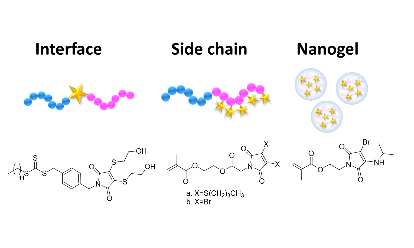
Fluorescent and chemico-fluorescent responsive polymers from dithiomaleimide and dibromomaleimide functional monomers, M. P. Robin, R. K. O’Reilly, Chem. Sci., 2014, 5, 2717-2723, DOI: 10.1039/C4SC00753K
One-pot synthesis of super-bright fluorescent nanogel contrast agents containing a dithiomaleimide fluorophore, M. P. Robin, J. E. Raymond, R. K. O’Reilly, Materials Horizons, 2015, 2, 54-59, DOI: 10.1039/C4MH00167B
Strategies for preparing fluorescently-labelled polymer nanoparticles, M. P. Robin, R. K. O’Reilly, Polym. Inter., 2015, 64, 172-184, DOI: 10.1002/pi.4842.
Exploration of the Substituted Maleimides Based Materials in Fluorescent Imaging Applications
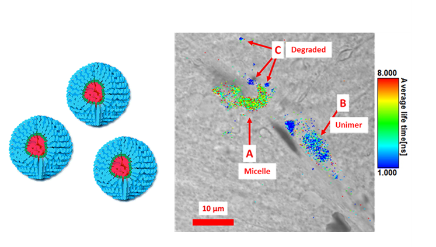
The understanding of the fluorescent properties based on substituted maleimides structures has paved the way for generating a novel fluorescent linking motif with the synergistic effects of both fluorescence and functional properties. Particularly, the solvatochromic response of substituted maleimides can provide real-time information reflecting changes in linking chemistry, micro-environment, and functionality. Our group has been focused on exploiting these substituted maleimides as readily synthesized linking handles bearing environment-sensitive fluorescence in different polymeric materials. This new scaffold provides a method for the tracking and probing of nanoparticles and we aim to develop these probes as tags to allow for the readout of intracellular fate and assist us in exploring the role that size and morphology have in the intracellular fate of such labelled nanostructures.
New functional handle for use as a self-reporting contrast and delivery agent in nanomedicine, M. Robin, A. B. Mabire, J. Damborsky, E. Thom, U. Winzer-Serhan, J. Raymond, R. K. O’Reilly, J. Am. Chem. Soc., 2013, 135, 9518–9524. DOI: 10.1021/ja403587c
CO2/pH-responsive particles with built-in fluorescence read-out, A. B. Mabire, Q. Brouard, A. Pitto-Barry, R. J. Williams, H. Willcock, N. Kirby, E. Chapman, R. K. O’Reilly, Polym. Chem., 2016, 7, 5943, DOI: 10.1039/C6PY01254J
Manipulating the fluorescence lifetime at the sub-cellular scale via photo-switchable barcoding, Y. Xie, M. C. Arno, J. T. Husband, M. Torrent-Sucarrat, R. K. O’Reilly, Nat. Commun., 2020, 11, 2460-2468, DOI: 10.1038/s41467-020-16297-3



